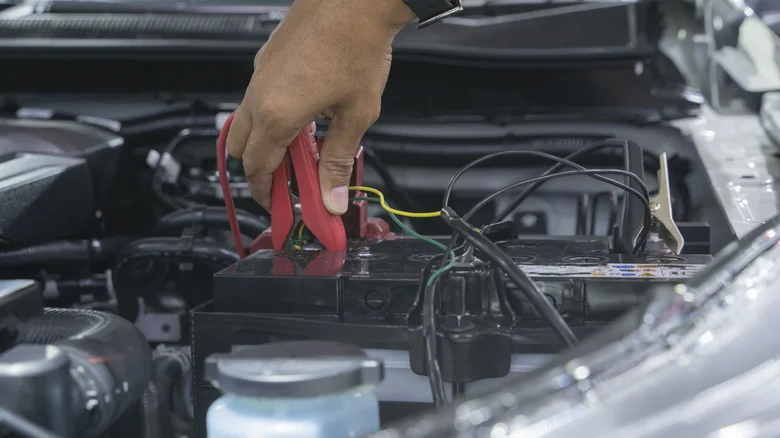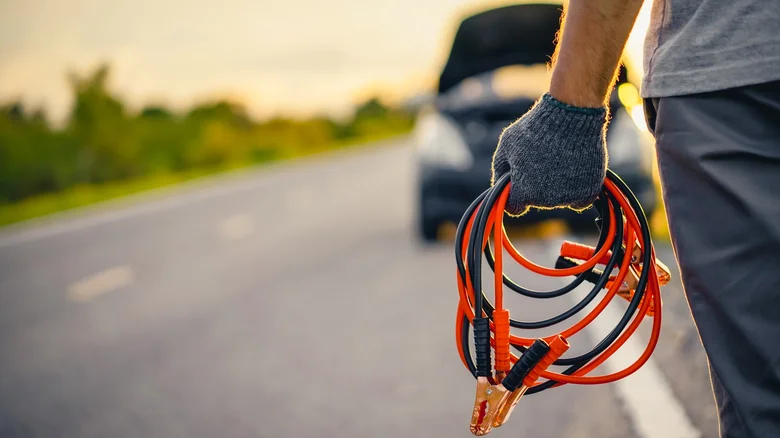
Few things are more frustrating than the incessant clicking of your engine as it attempts to start without success. Whether due to a defective alternator or mere misfortune, discovering that your car's battery requires a recharge can spoil your day. Nevertheless, there are several methods to not only rejuvenate your car's battery but also ensure it remains charged.
One of the most straightforward methods to recharge a battery is by using jumper cables, although not all drivers may have a set on hand. Additionally, there are portable battery chargers that can provide a sufficient boost to your car's battery.
Another less conventional method to maintain your battery's charge is to keep the vehicle in park and allow the engine to idle, but it may not perform exactly as expected. Given the time required to recharge a battery, the minimal power an idling engine generates, and the fact that an alternator is not designed for battery charging, it is challenging but feasible to charge your car's battery by keeping the engine running.
Yes... but also no.

Charging a car battery can take longer than anticipated, especially when the power supply is an idling engine. If you jump-start your car and leave it in park, the engine usually stays below 1,000 RPMs. At this low RPM, the engine does not generate sufficient mechanical electricity for the alternator to charge the battery at a reasonable speed.
When a vehicle is idling, the alternator is responsible for powering all the additional features, such as the infotainment system and climate control. As a result, it can only deliver a few amps to recharge the battery, which is far less than the hundreds of amps needed to start the engine. While an idling engine might not provide enough power for battery charging, an actively running engine does need that power. According to Jeff Barron, an auto electronics expert at Interstate Batteries, "You would need to drive for a long time to charge a car battery. Your alternator is not a charger, and there's no way your battery will reach 100% while driving." Interstate Batteries notes that driving over 500 miles at 65 mph would be necessary to recharge a car battery from 50% to 80%.
Ways to maintain your vehicle's charge
A good way to prevent your car battery from dying is through regular maintenance, including routine checks on its charge. For individuals living in cold climates or during harsh winter months, keeping the vehicle connected to a trickle-charger is often essential. If you rarely use your car, a trickle-charger can be an excellent solution to ensure your battery stays healthy.
A portable battery charger is an excellent choice for anyone lacking a trickle charger. Keeping one in your trunk ensures that you can easily address any battery problems. Simply connect the portable battery charger's jumper cables to your car's battery, follow the instructions, and you'll be back on the road quickly.
Additionally, having a set of jumper cables in your vehicle is a simple way to avoid a serious battery predicament. As long as another vehicle is willing to assist, jumper cables are nearly always effective.
What to do when your car's battery dies

Each night, you connect your trickle charger and keep jumper cables in your vehicle, but the unthinkable has occurred you've discovered that your car battery is dead. The initial action is to reach out to a friend who can come to your location to assist with jump-starting your car, or seek out a nearby driver who might be willing to lend a hand. Alternatively, you could contact a towing service or a mechanic, who can either jump your car or if there are more serious problems transport your vehicle for repairs.
Keep in mind that car batteries typically have a lifespan of three to five years. If you suspect your battery is nearing the end of its life or if you need to turn the key multiple times to start your vehicle, it might be time for a replacement. Additional indicators of a failing battery include weak headlights and the scent of burnt wires.



Post a Comment